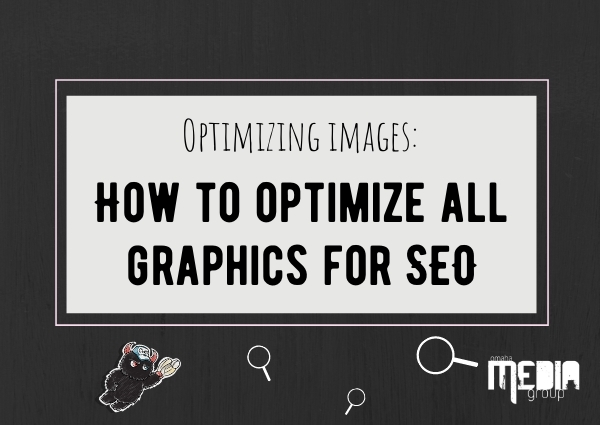Optimizing images: How to optimize all graphics for SEO
 https://www.omahamediagroup.com/images/uploads/monster_gallery/Omaha-Media-Group-Black.jpg
https://www.omahamediagroup.com/images/uploads/monster_gallery/Omaha-Media-Group-Black.jpg

What is image SEO?
Image SEO is the optimization of images and graphics for search engine optimization strategies. Yup, even images in search engines should be optimized with SEO strategies in place. This is because, just like long tail keywords for SEO, images bring in a small, but qualified amount of website traffic to a company’s website.
It is estimated that images account for less than 20 percent of Google’s search results; however, Google has been working on optimizing its search results for images. This is because, as consumers, images are easier to process large amounts of content.
The best part about optimizing images for SEO is that there doesn’t need to be an entirely separate strategy in place, and the other surprising factor is that images aren’t that hard to optimize!
Take it from a leading Omaha SEO company like Omaha Media Group, here is the ultimate guide to image optimization.
Title
Just like the title of a blog, news article or magazine, the same goes for the title of an image. While Google is one of the smartest pieces of technology, a company needs to make sure that titles of images are relevant and optimized.
This is because just like a website, Google needs to be informed of what the general information on the said website page is about, and an image is no different.
SEO experts optimize pages for SEO purposes and then tell Google, “hey, this page is optimized, go ahead and crawl it.”
Titles, labels and content is the most important notion to remember when working on image optimization. When it comes to SEO, relevant keywords and phrases are key to ranking over time in search engines and titles of images work the same exact way.
What are consumers looking for?
If they are searching for vehicles, what are phrases or keywords that they will be searching for? This is how to work on optimizing images for SEO without extra keyword research.
Alt tags
An alt tag is nothing but simply writing a small description of what the image is. Is the image a stock photo of a woman? Simply write in the alt tag spot, “woman sitting at a computer.”
An alt tag is not only important for search engines, but for websites that are trying to be more accessible to all searchers. An alt tag provides their screen readers or other technology a description of what the image is. Without this, the image will simply read “IMG_99566” and no one knows what that is.
Find the right file type
Not only do large files slow down a website, but these larger files are also not always search engine friendly. There are plenty of image files available for companies to download, but which is best?
The two types of file sizes that work best for both instances are JPEGs and PNGs. PNGs are large image files that have a higher resolution which is what makes them the ideal image type to use, but at the same time, the large image can take longer to load and slow down a website.
A JPEG is a lower image quality but is a small image size that can easily be sized into several different sizes which typically hold its resolution. Our suggestion is to use a PNG, but if JPEG works the best it is okay because images should be compressed anyway!
Compress images
A company’s website has approximately less than two seconds to load before a consumer decides to hit the back button; and on the other hand, Google and other search engines expect a website to load in half a second.
A large image and video that is not compressed are going to slow down the website which can hurt the ranking of the said website over time.
These are the top tips for optimizing images for SEO from our Omaha SEO company! For help with images, SEO strategies or getting your digital marketing started, contact our professionals today!
Posted In: Graphic Design, SEO and Search Marketing


























